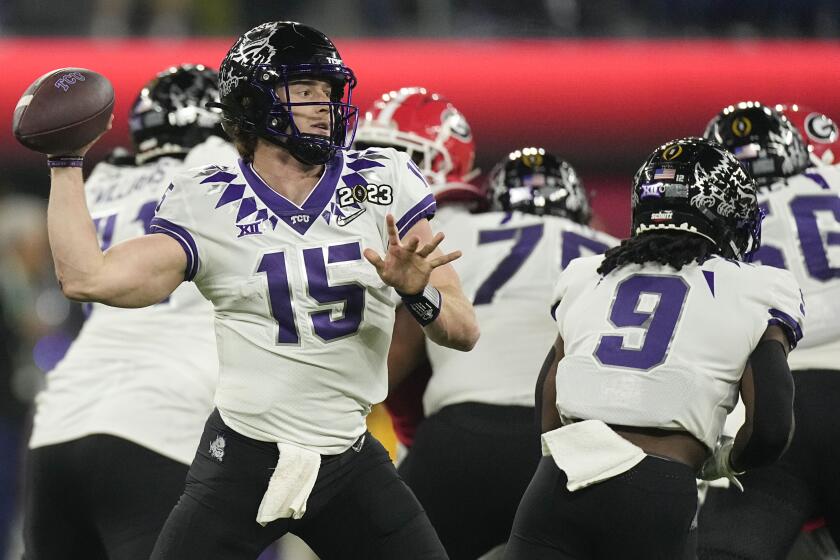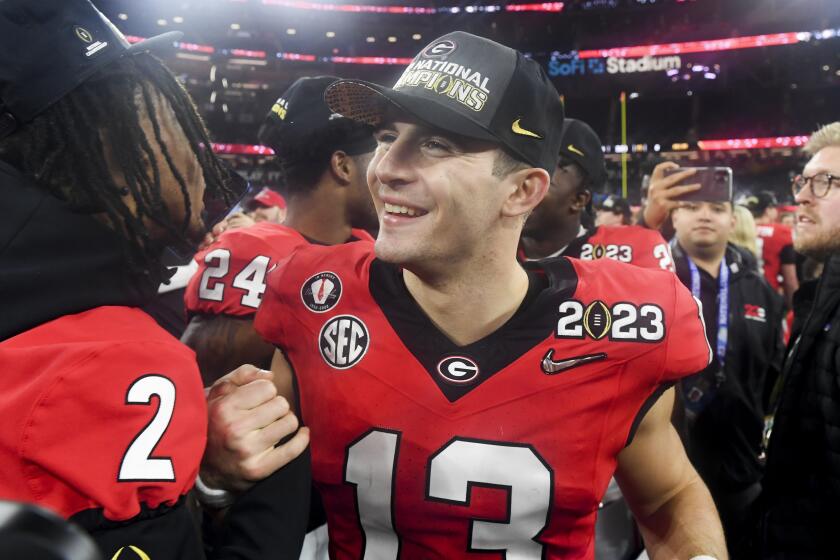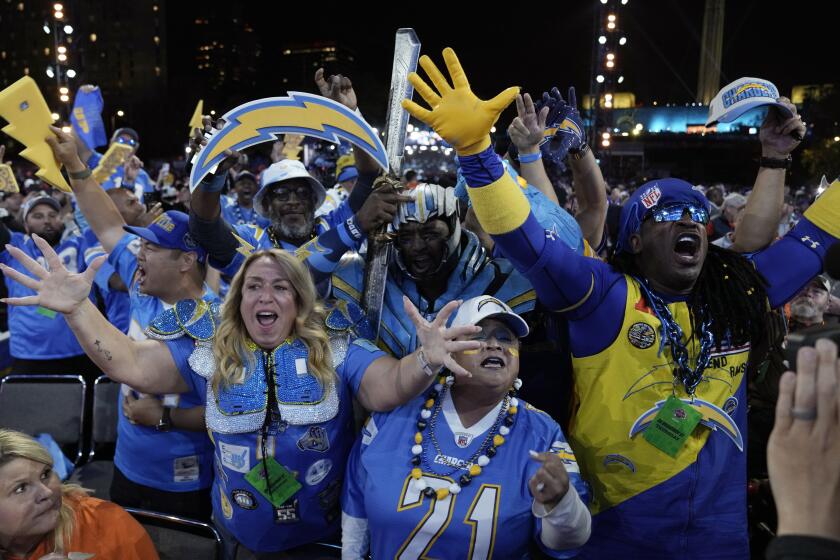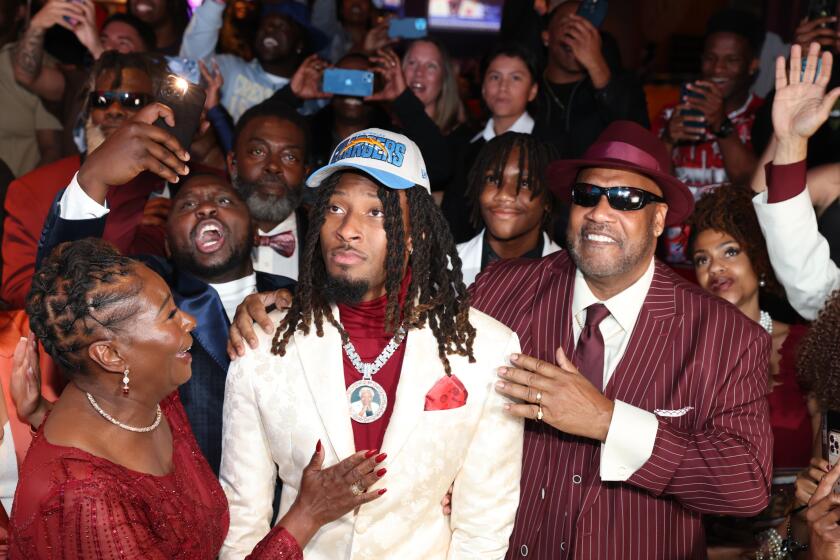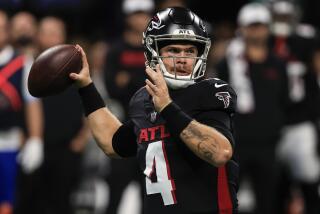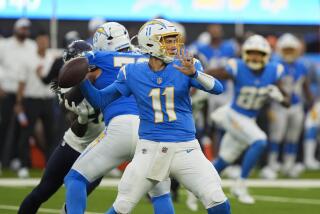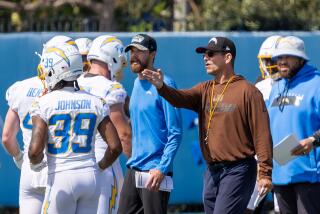Chargers were supposed to draft a tight end. Here’s why they decided against it
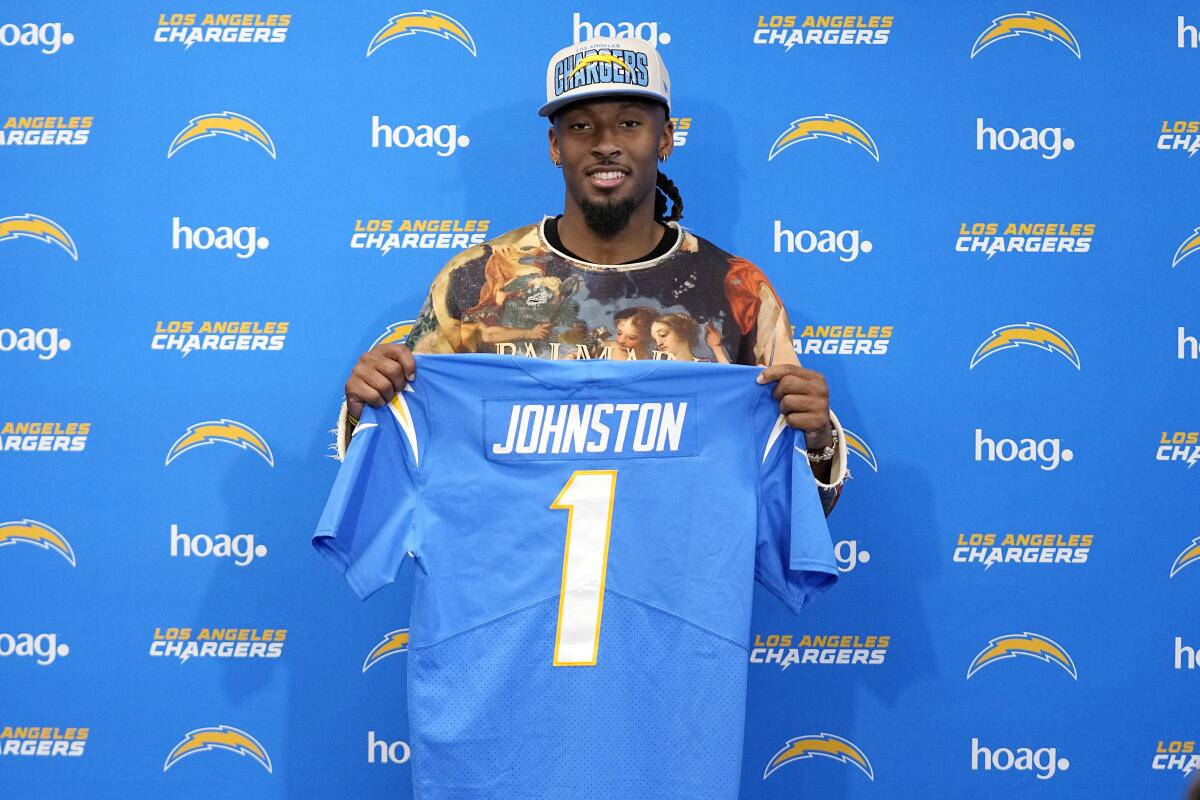
- Share via
There was no consensus, some observers predicting it would be Dalton Kincaid while others forecast Michael Mayer or perhaps a pick in a later round.
But there was no doubt among those outside the organization that the Chargers would draft a tight end last week.
Then, the team didn’t, choosing instead to — for now — stick with the same basic core that manned the position in 2022.
“Sometimes, that’s just the way drafts go,” new offensive coordinator Kellen Moore said Monday. “There were a lot of tight ends in this draft that we liked.”
NFL draft takeaways: The Chargers embrace three stars from talented Texas Christian football team that reached the national title game at SoFi Stadium.
After the seventh round Saturday, coach Brandon Staley explained that the draft unfolded in a way that didn’t mesh with whatever interest the Chargers had in the various tight ends available at the time.
So while bolstering some areas — wide receiver, defensive front, linebacker, offensive line — the Chargers stuck with Gerald Everett, Donald Parham Jr., Tre’ McKitty and Stone Smartt.
Part of the reasoning on the outside is that this team needs improved blocking from its tight ends in the running game, an area of nagging inconsistency last season.
Another thought is based on the arrival of Moore, who used tight ends with increased frequency in Dallas.
Last year, only Everett (55.9) and McKitty (45.4) played as many as 25% of the Chargers’ offensive snaps, though Parham also likely would have had he not been injured.
A modern draft era record 11 quarterbacks were selected in the first 150 picks of the 2023 NFL draft. You can blame Brock Purdy’s relevance for that.
The Cowboys did have three tight ends reach that threshold — Dalton Schultz (70.3), Jake Ferguson (37) and Peyton Hendershot (25.6).
Moore said he’ll adjust his system if necessary to fit whatever works best for the Chargers’ eventual 2023 roster.
“The cool thing about football is you can play it in a lot of different ways,” he said. “There’s not just one way of doing it. We find what these guys do really, really well and try and enhance those things.
“We probably used a little bit more the last couple years in Dallas. … It suited us well. We’ll do whatever suits us best here as we build this thing. But I’m excited about the guys we’ve got.”
After the draft, the Chargers signed rookie tight end Michael Ezeike, who played at UCLA. At 6-foot-5, 245 pounds, Ezeike is a project who is continuing to grow into the position after starting his college career as a wide receiver.
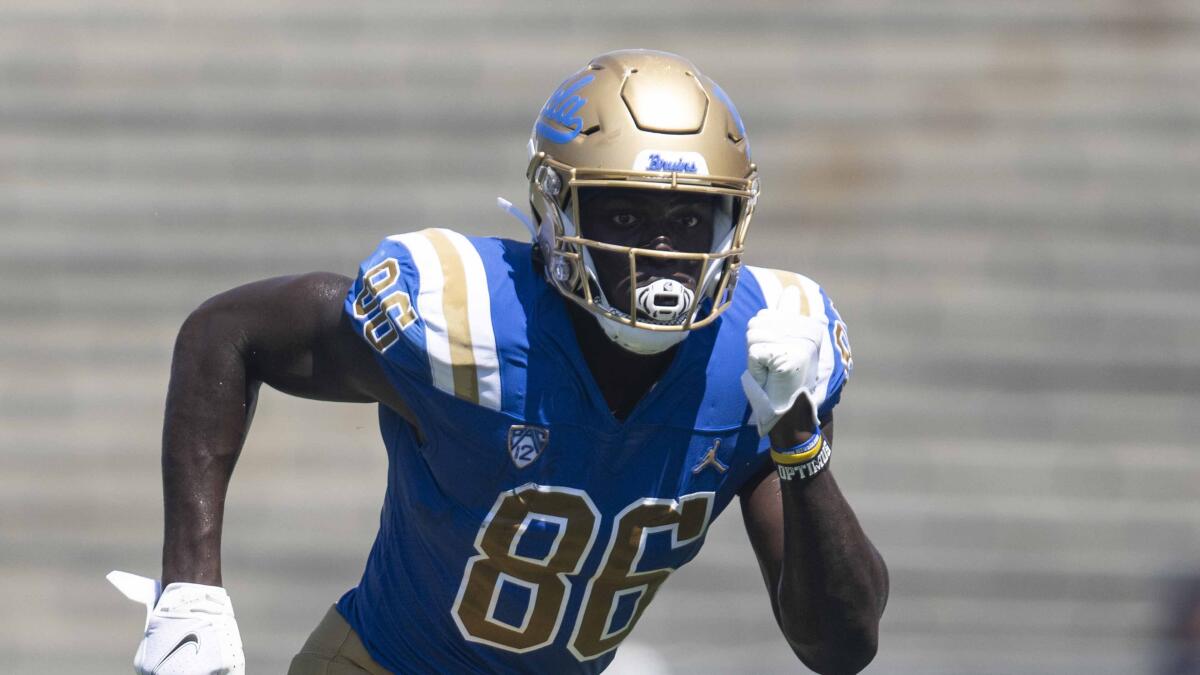
Beyond that, the Chargers still could look to sign a veteran free agent in the coming weeks. A year ago, they added three key defensive contributors — Bryce Callahan, Morgan Fox and Kyle Van Noy — after the draft.
But the remaining tight end market is rather limited, particularly among players known as blockers.
“Where we are now, that might not be where we are starting out for the first game,” Staley said. “We like those guys. We’ve played a lot of winning football with that group. We’ll be excited to keep adding to it as we get closer to the season.”
The Chargers opened their draft by selecting Texas Christian wide receiver Quentin Johnston in the first round. With size - 6-3, 208 — and escapability, the Chargers project him to add an element of explosiveness.
Staley also is counting on Moore to bring increased big-play production with his imagination and play calling. The word “creative” already has been used several times by various Chargers when asked to describe Moore.
Breaking down the Chargers’ 2023 NFL draft picks and how they might contribute on offense, defense and special teams next season.
“The quickest way to get to the end zone is big plays,” Moore said Monday. “If you go 12-, 14-, 15-play drives, they’re awesome. They’re really, really fun to be a part of because it bleeds the clock. It does so many good things.
“But when you do have explosive opportunities and take advantage of those, it’s a quicker way to get to the end zone. Ultimately, when you look at the statistics, explosive plays have a huge impact on who’s winning games.”
Just months into the job, Moore spoke with reporters for the first time since soon after he was hired in late January.
He praised quarterback Justin Herbert’s detailed approach, thanked Staley for drafting some offense and repeatedly used variations of the word “collaborate” to describe the transition to his scheme.
Moore also dismissed the idea that the uncertainty around running back Austin Ekeler — the NFL’s leading touchdown producer over the past two seasons — is impacting that transition.
The Chargers addressed their offense Thursday in the first round of the NFL draft, taking Texas Christian wide receiver Quentin Johnston at No. 21.
Ekeler wants an extension and has been granted permission to seek a trade, a development that hasn’t generated much interest to date. Moore said it’s still too early in the offseason to be concerned about Ekeler missing time.
“Right now,” he said, “we’re at such a wider lens that we’re really teaching for everyone.”
Last week, Herbert expressed his support of Ekeler, explaining that he and the rest of Ekeler’s teammates understand the business of football.
“Obviously a tough situation for him,” Herbert said. “He’s got his things that he’s got to figure out. But we’re all standing behind him. We trust the front office to do their job. I’m hoping it works out. … He’s definitely a tough guy to replace.”
More to Read
Go beyond the scoreboard
Get the latest on L.A.'s teams in the daily Sports Report newsletter.
You may occasionally receive promotional content from the Los Angeles Times.

